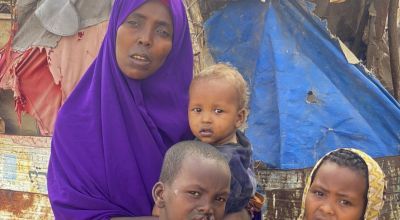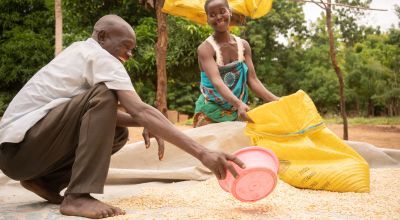
Read our 2024 annual report

Knowledge Hub
The best solutions to poverty are going to depend on the country and context.
We can’t find one solution (or even a dozen) that will work for the more-than-700 million people currently living below the global poverty line.
But that doesn’t mean there aren’t tried-and-true methods that can be adjusted and adapted to different circumstances. In some capacity, Concern works with all 11 of the solutions below. Read on to learn more.
1. Create safe, accessible, and well-paying jobs
This might seem like a no-brainer, but it’s not always that simple. In countries affected by conflict, for example, movements are often restricted to keep civilians safe. However, this can also plunge families into poverty if opportunities are limited. “It was forbidden to go out or move to other areas,” Laila*, a 31-year-old mother of five in Syria told us. “There was no work, no freedom to leave, there was only fear.”
For millions of people living in poverty without a consistent job that pays an adequate living wage, some basic vocational and entrepreneurial skills can help them build their own jobs. This is at the foundation of Concern’s Graduation programme, which works with families to “graduate” out of poverty through livelihoods support. Every year, we work with thousands of participants like 40-year-old Alexia Mukashyaka in Rwanda. After investing in a sewing machine, Alexia started a successful tailoring business, making on average 20 outfits for women each week.
“Before, life was bad. I was really poor. I would take a hoe and go and farm for someone for a wage to take care of my children,” she says. “But now, life is easy. Whenever I get work, I do it and then I save some money to take care of my children, no problem at all.”

2. Build personal safety nets
Alexia also thought beyond shirts and dresses. With the profits from her tailoring, she began to stock up on materials she consistently uses (like thread, zippers, and fabric), and also sells some of her stock to other tailors in the area. This is one source of extra income that helps her build a financial safety net. She also owns land where she grows and cultivates rice, which feeds her family and pays the workers who help her with the harvest. She’s also learning how to cut and style hair as an additional skill she’s interested in.
“There aren’t always regular clients to buy my clothes, but I can get a steady stream of clients for hairdressing,” she explains of the extra skill training. In the future, she envisions a space that would allow her to run both businesses simultaneously.
Many of the families Concern works with largely earn their income from agricultural work and pastoralism, but have also found other ways to earn a little extra while providing services to their communities: In Chad, Graduation participant Mahadia Gamar used some of the investment money provided as part of the programme to purchase a peanut grinding machine.
“When the ladies in our village bring me their groundnuts, I am able to grind them for a fee,” she says. “The money I earn from this helps pay for my children’s school fees.” She also contributes more from this income into her local Village Savings and Loan Association.
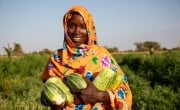

3. Develop community safety nets and microfinancing
Village Savings and Loans Associations (VSLAs) are another example of how we can create safety nets for people who may not otherwise have resources to fall back on. These small, member-run microfinancing groups enable people to build savings and take out loans at low interest rates, leading to 99% of all loans taken being repaid in full.
For Kenya’s Chalbi Salt VSLA, each member joined by contributing 1,000 Kenyan Shillings (about $9.00). Members used loans to invest in profit-making initiatives and, upon repaying the loan, added a bit more in to cover the interest — which was then redistributed amongst the group, creating a profit cycle. VSLAs can also be vital resources when an emergency hits, like a failed harvest or a medical crisis, and a personal safety net isn’t enough.
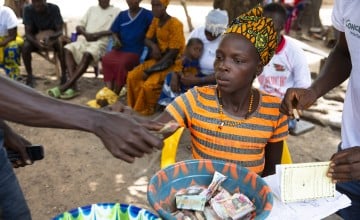
4. Give people cash
“Time and time again, researchers have shown that free money may be the most efficient, the cheapest, and the most civilised way to combat poverty,” Dutch historian Rutger Bregman says in a 2014 TED Talk.
“Counter to really harmful stereotypes, we saw that people made wise financial choices,” adds Claire Williams, CEO of Canadian nonprofit Foundations for Social Change, referring to a cash transfer study that the organisation ran with the University of British Columbia in 2018.
For emergency responses, cash transfers are cheaper than bringing in supplies, support local economies and markets (where supplies may be available, just not affordable), and are more efficient, convenient, and safe. And when distributed in these contexts, they can help people not slide into (or further into) poverty following a major shock like an earthquake, drought, war, or flood. Even in non-emergency situations, a small start-up grant of $100 is sometimes all it takes to help a family living below the poverty line to launch a new business, while keeping on top of their bills and keeping their children fed and in school.
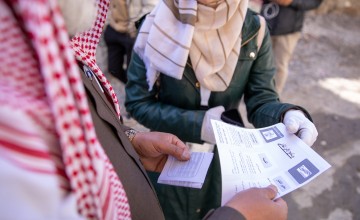
5. Invest in women
When we invest in women, economies grow. According to a 2023 study from Moody’s, giving women around the world the same work and wage opportunities as men could give the global economy a $7 trillion boost, particularly in low-income countries where the untapped potential is greater.
This is especially true in agriculture. Former FAO Director-General José Graziano da Silva said in 2016 that “women are the backbone of our work in agriculture… when women have opportunities, the yields on their farms increase – also their incomes. Natural resources are better managed. Nutrition is improved. And livelihoods are more secure.”
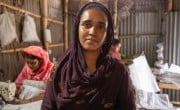
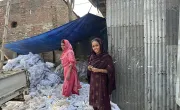

6. Increase access to education
Speaking of children, UNESCO reports that if all students in low-income countries had just basic literacy skills (and nothing else), an estimated 171 million additional people could escape extreme poverty. If all adults completed secondary education, we could cut the global poverty rate by more than half. Education develops skills and abilities, corrects some of the inequities that come from marginalisation, and decreases risk and vulnerability.

7. Improve food and nutrition security
Hunger is a driving force behind poverty (and vice-versa). When a person doesn’t have enough to eat, their immune system is more easily compromised, they don’t have the physical or cognitive strength to make it through the day, and they often lack enough energy to work.
This is why we prioritise nutrition in the fight to end poverty. Many of our livelihood programmes also include nutrition components, such as our recent work in Ethiopia and Kenya with Lifesaving Education and Assistance to Farmers. Simply getting the right amount of calories and nutrients every day can go a long way to ending poverty.
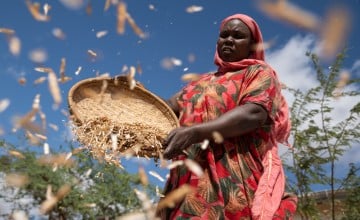
8. Increase access to clean water, sanitation, and hygiene
Like hunger and malnutrition, contaminated water can lead to debilitating illnesses. What’s more, over the last 20 years, the lack of safe drinking water and basic sanitation has gone up — from affecting 197 million people in 2004 to 211 million people in 2024. This adds up: The waterborne illnesses that result from this shortage contribute to 1.4 million deaths per year, as well as 50% of global malnutrition.
The link between improved water access and declining poverty rates goes beyond health. When communities have better access to safe and clean water, those who often spend their time collecting water from further away will have more time to spend on other, more meaningful pursuits.
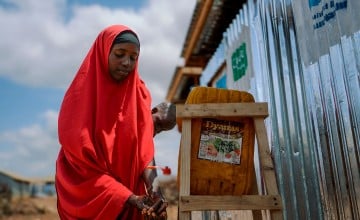
9. Invest in disaster risk reduction
Disaster risk reduction, climate adaptation, and a number of other systems exist to help people (particularly those with the fewest resources) better anticipate natural disasters and more effectively recover from them. This is important as the World Bank notes that these disasters could force an additional 100 million people into extreme poverty over the next decade.
That doesn’t have to be the case. Climate Smart Agriculture is proven to help farmers adapt to the changing ecosystem on their land (including floods and droughts), improving both the quality and quantity of their harvests. Early warning/early action (EWEA) and other DRR strategies help communities avoid excessive loss and damage when a disaster hits. And the economic benefits are huge: Every $1 invested in disaster risk reduction can save $15 in recovery costs.
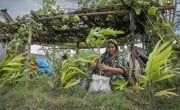


10. Make healthcare more accessible
One of the knock-on effects of nutritional or waterborne diseases is that the most vulnerable people — people who are often more likely to get these illnesses in the first place — usually lack affordable and quality healthcare options, both for treatment and preventative care. This is also true for people who sustain injuries that may prevent them from working.
Maternal and child health in particular are two major opportunities. Expecting mothers need regular check-ups and more nutritional care to ensure that their child is born with the best possible future for their health and development (malnourished mothers often pass that on to their unborn child). Concern helps to train local healthcare workers who in turn work within their communities, monitoring childhood nutrition, and providing health demonstrations. We’ve also found mobile clinics to be an effective way of providing regular care in hard-to-reach communities, whether they’re in the remote Lake Chad Basin or on one of Bangladesh’s many islands.
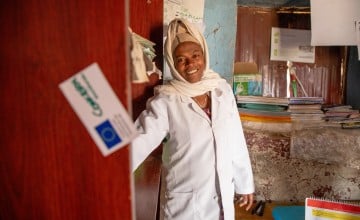
11. Achieve lasting peace
Ending all wars and conflicts is a tall order, but conflict is one of the biggest contributors to poverty, and ending poverty will ultimately become a political issue and part of a larger peacekeeping mission. While estimates around data for the country vary, Syria’s poverty rate has increased from approximately 12% in 2007 to 83% in 2019. On the other hand, the end of conflict in Cambodia helped to grow its middle class: The country’s poverty rate dropped from 47.8% in 2007 to 13.5% by 2014.

Concern's work to end poverty
At Concern, we work to sustainably end poverty by addressing inequality and risk, tailoring solutions that support the specific forms of inequality and vulnerabilities faced within each community.
Equality, particularly gender equality, is a pivotal part of all of our programmes, and we work with community members and leaders to question and challenge the underlying assumptions that perpetuate equality gaps while designing solutions that accommodate people of all genders, levels of ability, ages, races, social status, and more. We aim for equality of outcomes, not equality of inputs.
From there, we look at the specific risks and conditions that cause poverty in a specific country, region, or community. Often our solutions to poverty work with families to build livelihoods that include more than one source of income. We mentor programme participants and train them on business management, marketing, bookkeeping, and other essential skills. We also provide cash grants and help to establish local Village Savings and Loans Associations (and other similar committees) to help create community safety nets.
What we have found is that the communities and individuals we work with already know what they want to do, they just need a few resources to make it happen. We provide those resources, along with some sustainable means of keeping them up long after we’re needed.



